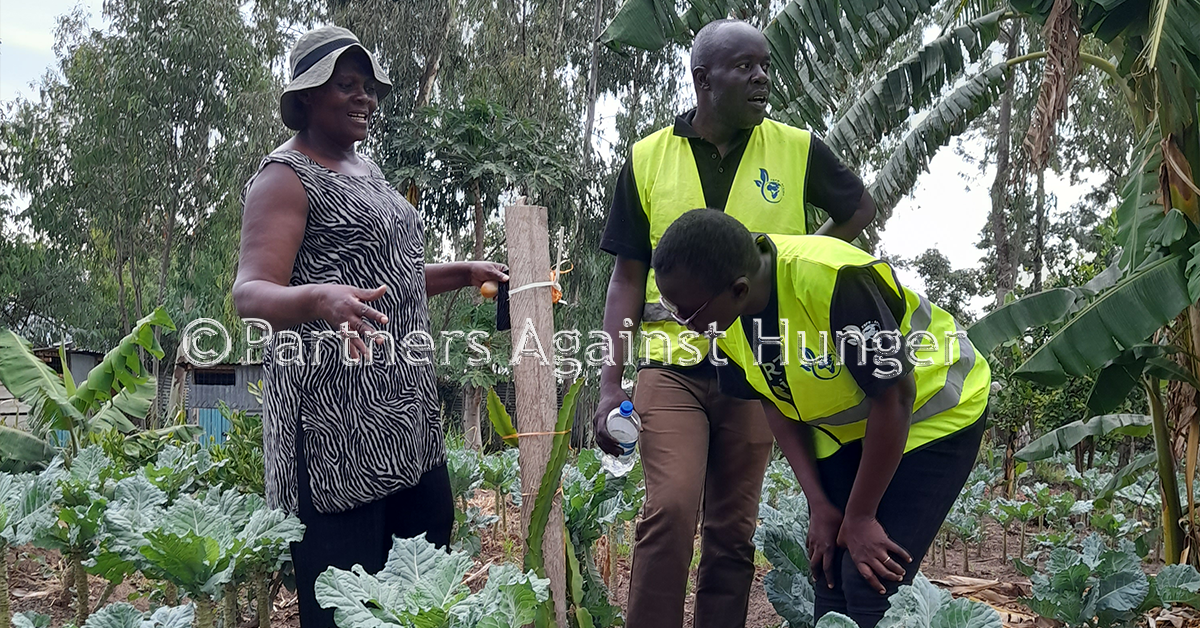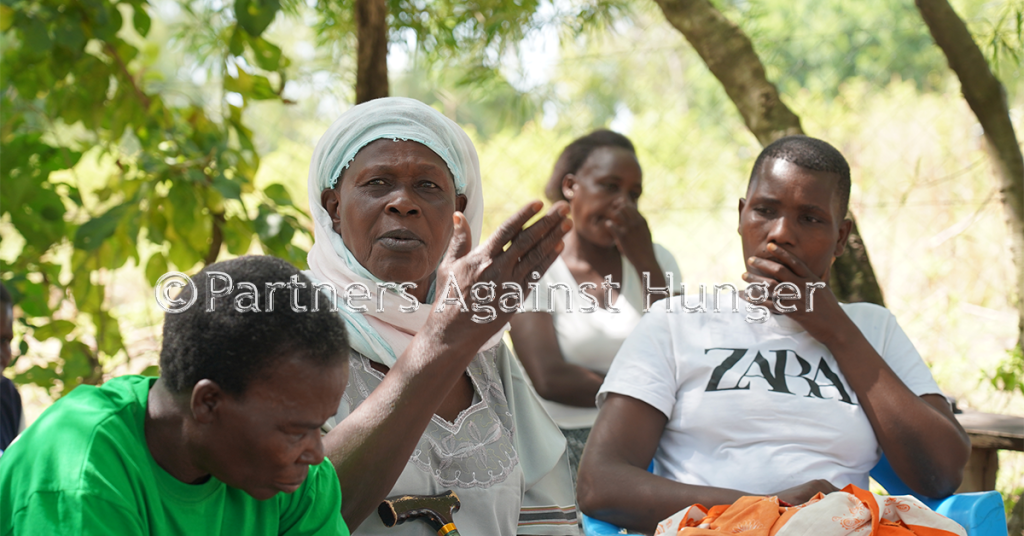
How Women in Agriculture Contribute to Socioeconomic Stability in Africa.
This month we celebrated International Women's Day, and we need to take into account the vital role that women play in agriculture at different levels. Women make up the backbone of the agricultural sector in Kenya, Sub-Saharan Africa. Despite their invaluable contributions, women in agriculture still face a number of roadblocks that limit them from reaching their full potential and participating in the agricultural sector.
This year’s theme is “Invest in women: Accelerate Progress,” encouraging us channel resources towards women in their endeavors to make the world a better place. Focusing on agriculture, we still have existing gaps when it comes to digital agriculture, and women are less likely to fully enjoy the benefits that come with it.
According to the FAO, women farmers receive only five percent of agricultural extension services. Based on a number of research findings, reaching out to women with extension services is frequently reliant on having permission from male community members due to cultural norms.
In general, women’s contribution policy design, has not yet attained the necessary momentum to turn around key issues facing women in agriculture. In many cases, planners have little data on the significant contribution that women make to household food security and productivity in agriculture.
In this article, I highlight the role of women in agriculture, the challenges they go through in the face of digital revolution, and the best practices we can put in place to uplift them.
Building accountability for women in agriculture
Women are of critical importance in African agriculture. Emerging evidence estimates that women contribute between 24% and 56% of the crop production labour force in different countries across Africa (Palacios-Lopez et al. 2017, 2018). In sub-Saharan Africa, specifically, it is estimated that approximately 40% of the agricultural labour force is provided by women (Christiaensen and Demery 2018).
We have to recognize that the trends are also shifting, and more are becoming employers in the sector, especially at market levels. Amid the empowerment they have received, they are owning food stores, food outlets, and value addition centers where they employ other women to assist in running the businesses. Moreover, they pay the suppliers and other distributors, which generates income that will trickle down to production levels and households.
80% of the food we eat is sourced from vendors, most of whom are women. They are instrumental at the top of the ladder as the final link to consumers in ensuring the food supply is complete through their involvement in food processing, preservation, and distribution.
In sub-Saharan Africa, specifically, it is estimated that approximately 40% of the agricultural labour force is provided by women.
Christiaensen and Demery, 2018.
Through their involvement in agritech and research, women contribute valuable insights and innovations to improve agricultural practices and productivity. This is evident, particularly among young people who are participating in value-adding processes backed by research. This is crucial in guiding consumers on the nutritional value of the products developed.
Nutrition is a relevant part of the food systems discussion, and often women are the frontline champions of the holistic perspective on nutrition that emphasizes the importance of community-based culinary capacity, culturally relevant meals and sustainability.
Under the concept of food sovereignty, indigenous women continue to play a role in sharing knowledge about indigenous foods and their importance in our diets in order to ensure the transformation of food systems and agriculture.
As the logic of centralization gives way to the logic of diversity, which is based on individual and communal rights, their contribution is becoming increasingly acknowledged. Deconcentrating production, markets, financing, land ownership, and preventing corporate acquisition of food and water sources' biodiversity and eco-systems are crucial for achieving this.
In aquaculture, women are actively involved in various aspects, such as pond preparation, feeding, harvesting, and processing. Apart from the standpoint of fishmongering, women are shifting to cage culture farming. This helps to improve fish business, household food and nutrition security, and create employment opportunities, especially for the youth who are employed to manage and protect the cages.
This switch to cage cultivation could decrease the conflict over fish, especially in lake regions such as Lake Victoria. Encouraging women's participation in aquaculture can reduce conflicts around land ownership issues, as they can play a role at different stages of the value chain other than primary production, such as hatchery technologies and research.
As the world continues to evolve around technology, more women are becoming more involved in digital agriculture by using apps for crop management and pest control, accessing market information, and conducting financial transactions through mobile banking.
According to the latest data, 63.5 percent of women in the world accessed the internet as of January 2024, (Statista, 2024), but only 1 out of 3 African women have access to the internet–compared with half of men (Michelle, 2023). This will probably prevent women’s entrepreneurship and rob society of their creative and innovative abilities.
Their participation in policy formulation is essential for advocating gender-sensitive agricultural policies and programs. They understand more about the burden of withstanding shocks on households. Although their numbers continue to rise in the decision-making spheres, the high presence of women may not translate into their full participation or mean that their concerns have been taken into consideration as per FAO’s 2024 description, which outlines participation as the extent to which one’s voice is heard, respected, and applied in decision-making, planning, implementation, and monitoring of actions.
Challenges Faced by Women in Agriculture
Despite their significant contributions, women in agriculture often face systemic barriers that limit their participation and hinder their potential.
Women, particularly rural and uneducated women, face nutritional deficits, have little access to land or assets, and experience more labour-intensive food production (e.g., harvesting, preparation) without the benefit of increasing returns.
The lack of women’s representation within multisectoral systems contributes to these inequities. This can result in gendered disadvantages, making women more vulnerable and often facing time constraints due to their multiple roles within households and communities, which further limit their ability to engage in agricultural activities. This can be attributed to suggestions to transform food systems, which have largely lacked a gender-lens.
On reaping the benefits of, digitised agricultural value chains:
- Social norms: women are often excluded from agricultural value chains due to social conventions, as men dominate and have institutional connections to buyers, limiting their contribution to labor and decision-making.
- Women farmers often face barriers to accessing resources, such as markets, advisory services, capital and risk protection, and inputs and assets, even in formal value chains or cooperatives that can fuel productivity and increase yields.
- Mobile gender gap: Digital solutions can enhance women's productivity and income, but they are less likely to own and use mobile phones due to barriers like affordability, low literacy, and structural inequalities, including education and income disparities.
Women’s Representation in Food Systems
To address the afore-mentioned challenges and harness the full potential of women in agriculture, mechanisms of accountability are necessary for proper representation in order to hold representatives responsible and sanction them when they fail to fulfill their mission. Systems must also exist for women to confront the structural obstacles that traditionally prevent them from owning resources and from being excluded from them.
This entails implementing policies and programs that promote gender equity and women's empowerment in agriculture. Investments in gender-responsive agricultural initiatives that meet the unique needs and limitations encountered by women must be given top priority by governments, development organizations, and civil society organizations.
In addition, initiatives should concentrate on expanding women's leadership and decision-making positions in agricultural organizations and institutions, and offering training and capacity-building programs to advance women's technological and agricultural expertise.
Despite these existing legal frameworks to promote property and land ownership among women in Kenya, more than 70% of women in Kenya do not own any kind of land. The 2022 KDHS report reveals that 75% and 93% of women do not own agricultural and non-agricultural land. Creating enabling environments that support women's rights, including legal frameworks that protect women's land and property rights, is crucial for fostering their increased economic share in agriculture.

Women’s participation at all levels of agriculture is crucial, and especially at local levels where they can influence community action. Therefore, there needs to be emphasis on customized collective solutions, based on local knowledge, particularly from Indigenous women, who feel valued in the co-creation of solutions.
There is robust evidence on how cross-sectoral policies can be leveraged to mitigate these impacts and ensure a gender-just transition to environmental sustainability. It will also map the approaches needed to finance these policies and identify the routes to translating social mobilization into transformative, accountable, and sustainable change.
As we reflect on International Women's Day, it is evident that revamping women's potential in agriculture is not only a matter of social justice but also essential for achieving sustainable development and food security.
By recognizing and addressing the unique challenges faced by women in agriculture and building greater accountability within food systems, we can unlock the full potential of women as agents of change and transformation in the agricultural sector.
There is no more time for comfortable options. We have to agree that women-centric design assists in customizing services to the unique requirements, preferences, and behaviors of women in agricultural value chains. Examples of these services include digital procurement payments, agri Digital services, and digital advisory.
Looking at robust evidence, redesigned approaches are needed to finance policies around women in agriculture and identify the routes to translating social mobilization into transformative, accountable, and sustainable change.
References:
- UN Women. (2022). Progress of the World's Women 2022-2023: Women in Agriculture: Responding to the Challenges of Climate Change. United Nations Entity for Gender Equality and the Empowerment of Women.
- Kenya Demographic Health Survey. (2022)
- IFAD. (2021). Rural Development Report 2021: Creating Opportunities for Rural Youth. International Fund for Agricultural Development.
- World Bank. (2020). Women, Business and the Law 2020. World Bank Group.
- FAO. (2011). The State of Food and Agriculture: Women in Agriculture Closing the Gender Gap for Development. Food and Agriculture Organization of the United Nations.
For more information, contact info@fspnafrica.org
